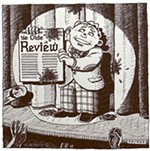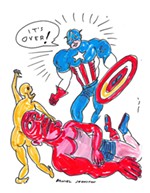A Brief History of the MACC
By Robert Faires, Fri., Sept. 14, 2007
Calls for a local center dedicated to Mexican-American culture and history date back to the 1970s, but the project never quite gathered the momentum that would lead to its realization. It came painfully close in 1992, when a $10 million bond proposal to fund a Mexican American Cultural Center and the George Washington Carver Museum & Cultural Center failed by 3% of the vote. Despite that defeat, the city set aside 6 acres of land for the MACC on the north shore of Lady Bird Lake. That kept the dream alive until 1998, when citizens supported a bond proposal allocating $10.9 million for the MACC. CasaBella and Del Campo + Maru were selected to design the facility, and their master plan called for constructing the center in three phases: Phase 1 would create an outdoor plaza, or zócalo, open toward Lady Bird Lake, surrounded by a two-story crescent-shaped building with offices, classrooms, and a large multipurpose room for performances and talks, with surface parking adjacent to it; Phase 2 would extend the building on both ends to add more classrooms and offices and add a 300-seat theatre; and Phase 3 would add an 800-seat theatre and a two-story parking garage. The Center for Mexican American Cultural Arts, a nonprofit created to oversee construction of and operate the MACC, had its lease agreement with the city terminated in 2002. Troubles with funding and oversight for the facility caused the center's ground-breaking to be postponed several times, but in January 2006, construction finally began on the $16 million first phase. That was completed this summer, although the southern arm of the building wasn't built; now dubbed Phase 1-A, this addition – to include a dance studio, a music studio, a classroom, and offices – is projected for completion in spring 2009. The center's grand opening is Sept. 15. Phases 2 and 3 are expected to be finished over the next decade as funding is secured.








